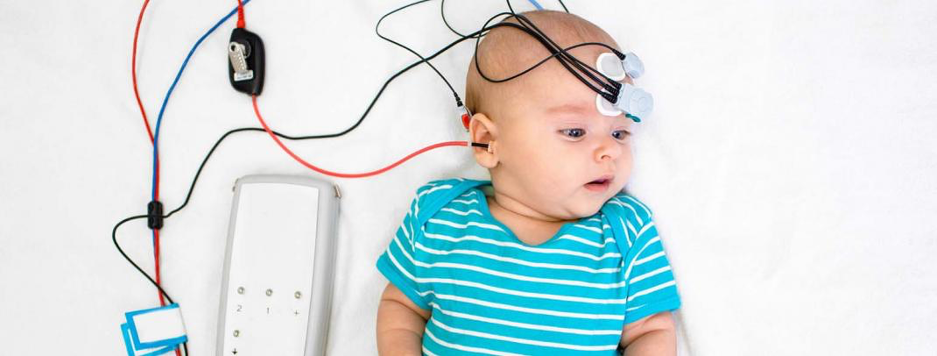Autism can be challenging to detect, especially in very young children. Research has shown early diagnosis and treatment interventions can lead to better long-term outcomes for autistic people.
Because of this, the scientific community is working toward finding innovative diagnostic methods that can help detect this neurotype much earlier.
Babies who are later diagnosed with autism have a slightly slower brain response to sound on a newborn hearing test than non-autistic babies do, according to a new study
Hearing tests may be one such diagnostic tool. Researchers from Harvard Medical School in Boston, MA, and the University of Miami analyzed data from auditory brainstem response (ABR) hearing tests routinely given to infants shortly after birth in the state of Florida.
The team then matched the data to the Florida Department of Education records of those children who later received a diagnosis of a developmental condition.
Results showed that infants who later received an ASD diagnosis had slower brain responses to sounds during their ABR tests conducted at birth.
This research led by Harvard Medical School investigators and conducted in collaboration with colleagues at the University of Miami suggests that a relatively simple hearing test—already used in newborns worldwide—could enhance screening efforts.
The study, published in Autism Research, shows that newborns with abnormal scores in their hearing results are at increased risk for a subsequent diagnosis with an autism spectrum disorder.
The findings suggest that the screen, called the auditory brainstem response (ABR) test, could one day help clinicians identify autism in infants, says study investigator Oren Miron, research associate in biomedical informatics at Harvard University.
The ABR test is already used to screen nearly all babies born in a U.S. hospital for hearing impairments. Infants in a neonatal intensive care unit who were later diagnosed with autism showed delayed brain responses to sound on this test at around 10 days old, according to a 2012 study. And autistic children aged 2 to 6 years can also show ABR delays, a 2017 study suggests.
But those analyses both exposed participants to higher-intensity sounds than are typically used in routine screening. The new work investigated whether the results from conventional ABR screenings can foretell autism, too.
“There’s a brain test that’s done on every newborn to detect hearing impairment, and it’s already been shown it’s abnormal in children with autism,” Miron says. “Once we develop this marker further, it could help us modify those 4 million hearing tests that are done each year so they’ll also test for autism.”
Miron and his colleagues analyzed universal hearing screening data for more than 130,000 babies born in Florida from 2009 to 2015. According to state education records, 321 of those children had autism.
The screening test involves piping a series of clicks through a headset into a sleeping newborn’s ears. Electrodes placed on the infant’s scalp detect the auditory brainstem response — a set of brain waves that arise in response to the sounds.
Miron and his colleagues relied on data from screening tests that used low-intensity clicks: 35 decibels, or about as loud as a whisper. They measured the timing of ‘V-negative,’ a dip in the waveform’s amplitude that occurs after its fifth, or ‘V-positive,’ wave. They also inspected the waveform’s phase, from its start to V-positive.
Autistic children show a slight delay in the appearance of V-negative as infants, the researchers found, but only for sounds piped into the right ear: The wave appeared 10.77 milliseconds, on average, after the clicks, compared with 10.51 milliseconds in non-autistic babies. And the brain-wave response is significantly prolonged compared with that of non-autistic babies, regardless of which ear the sounds are played in.
The researchers emphasize that the test is not yet ready for frontline clinical use and their work needs to be reaffirmed in subsequent studies.
Analyzing more ABR results might suggest other ways to refine the screening specifically for autism, such as by changing the decibel frequency, Miron says. More research could also reveal how this auditory mechanism in the brain relates to autism.
REF:
https://www.medicalnewstoday.com
https://hms.harvard.edu/news/hearing-autism
IMUTISM TEAM

